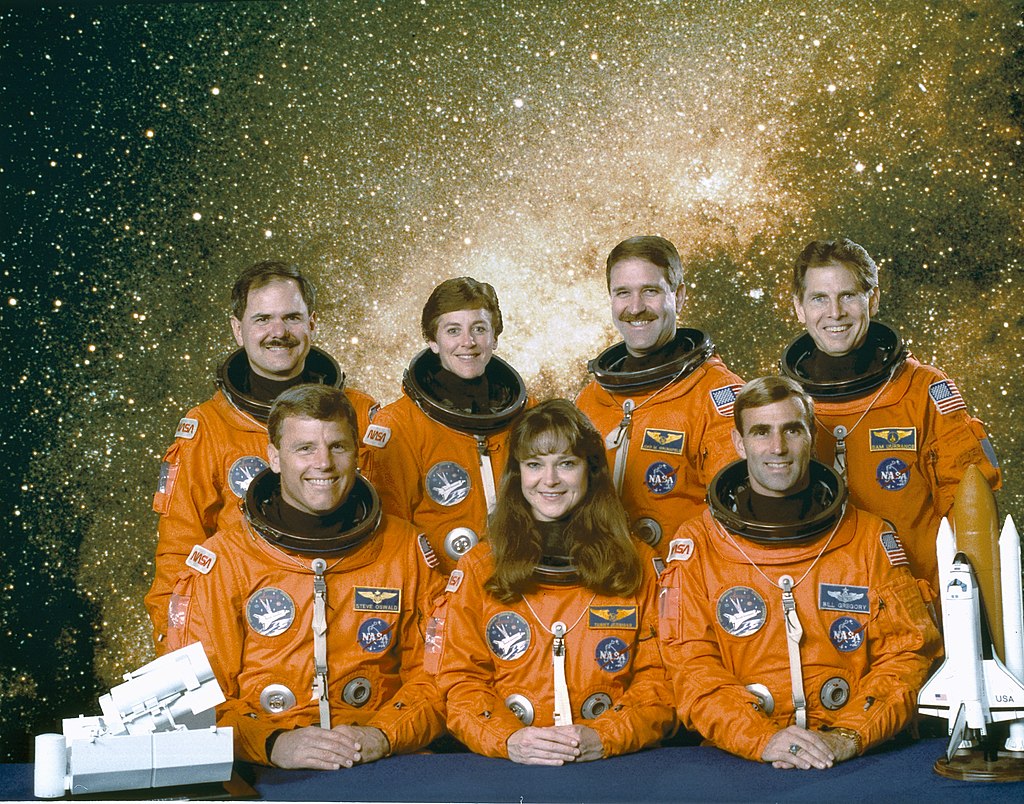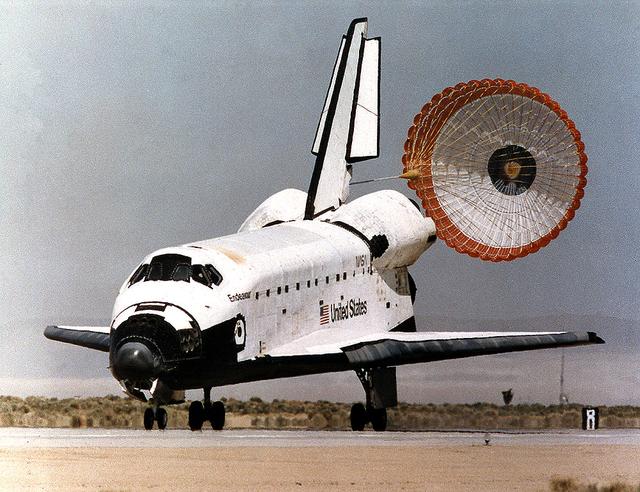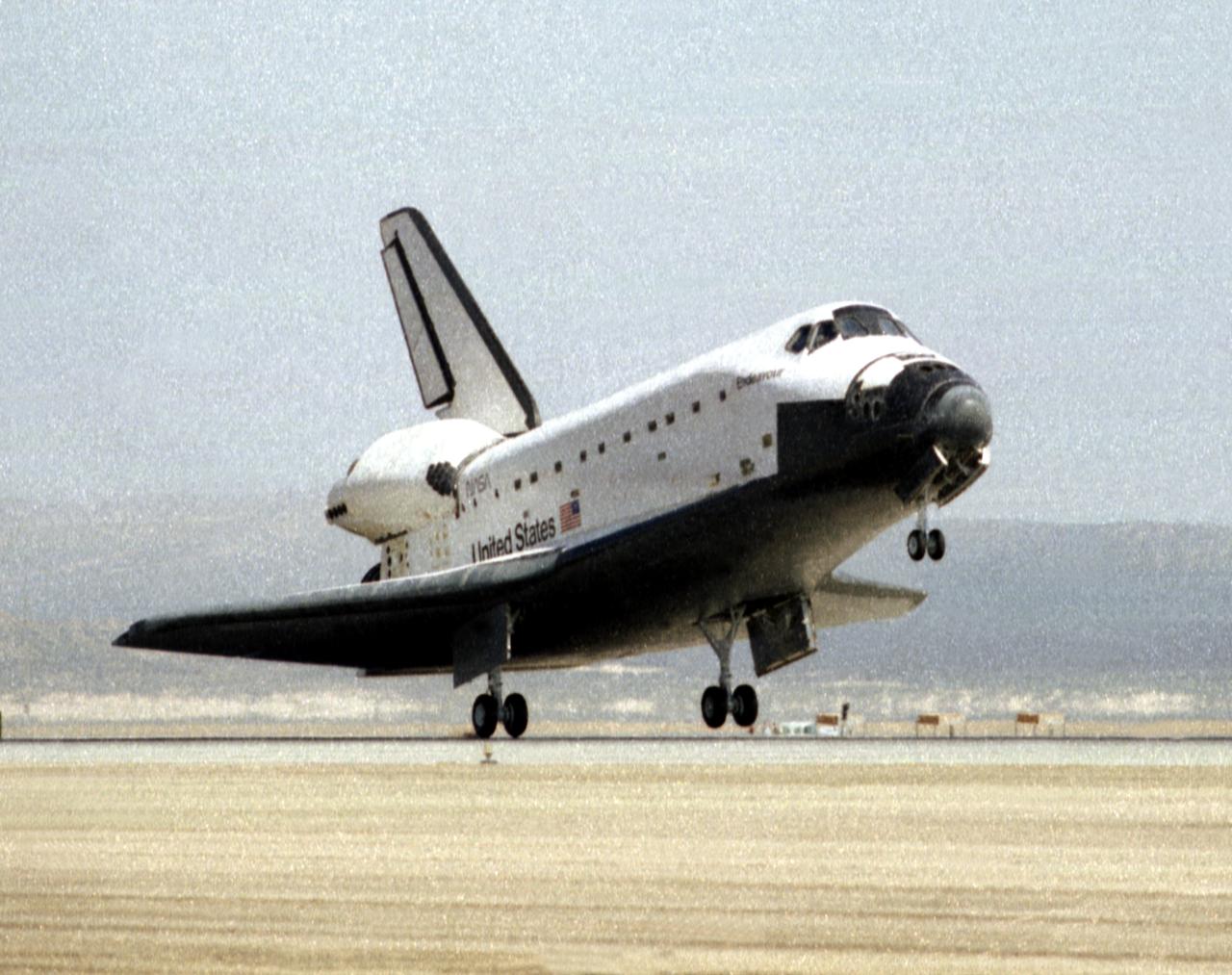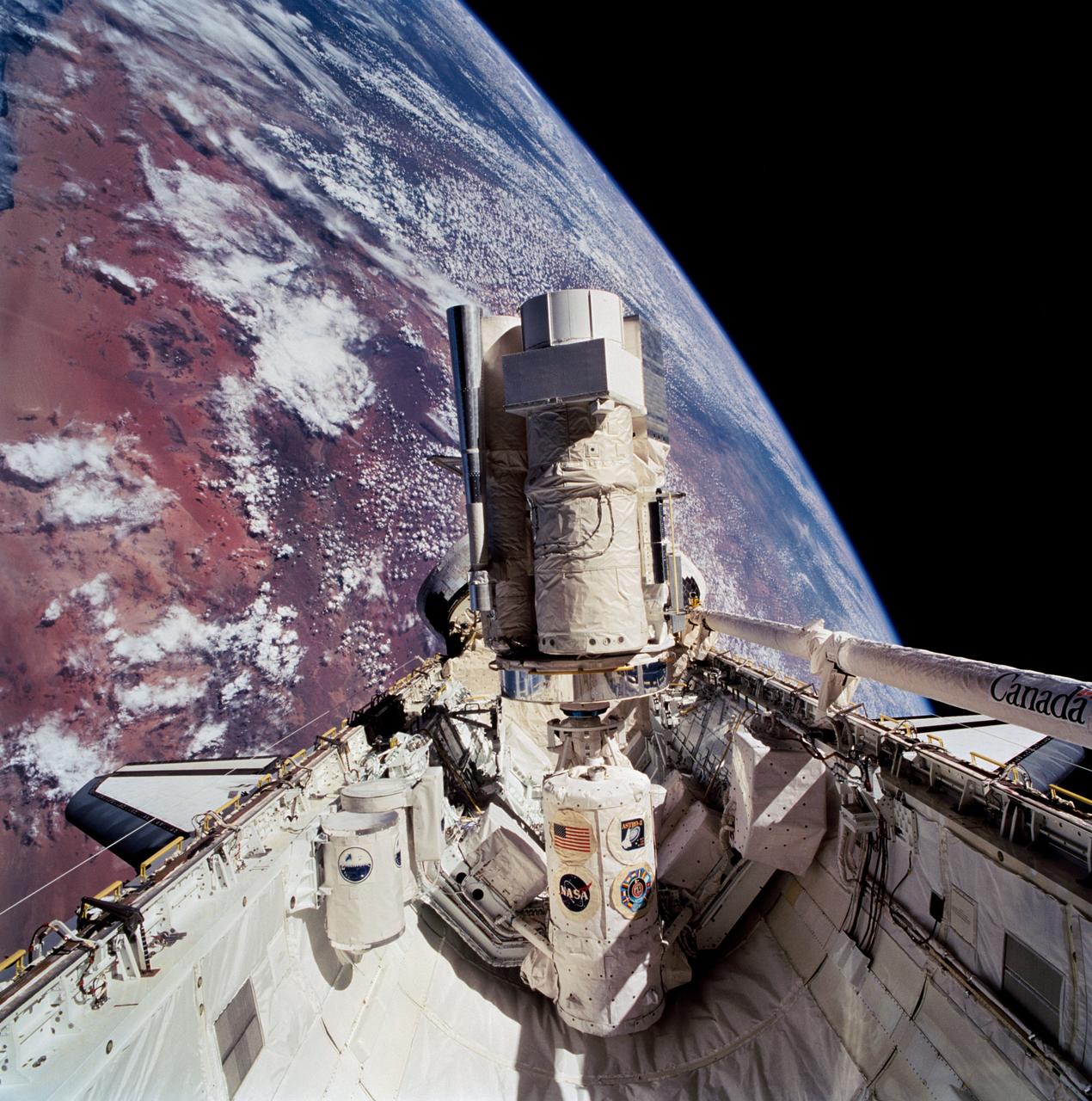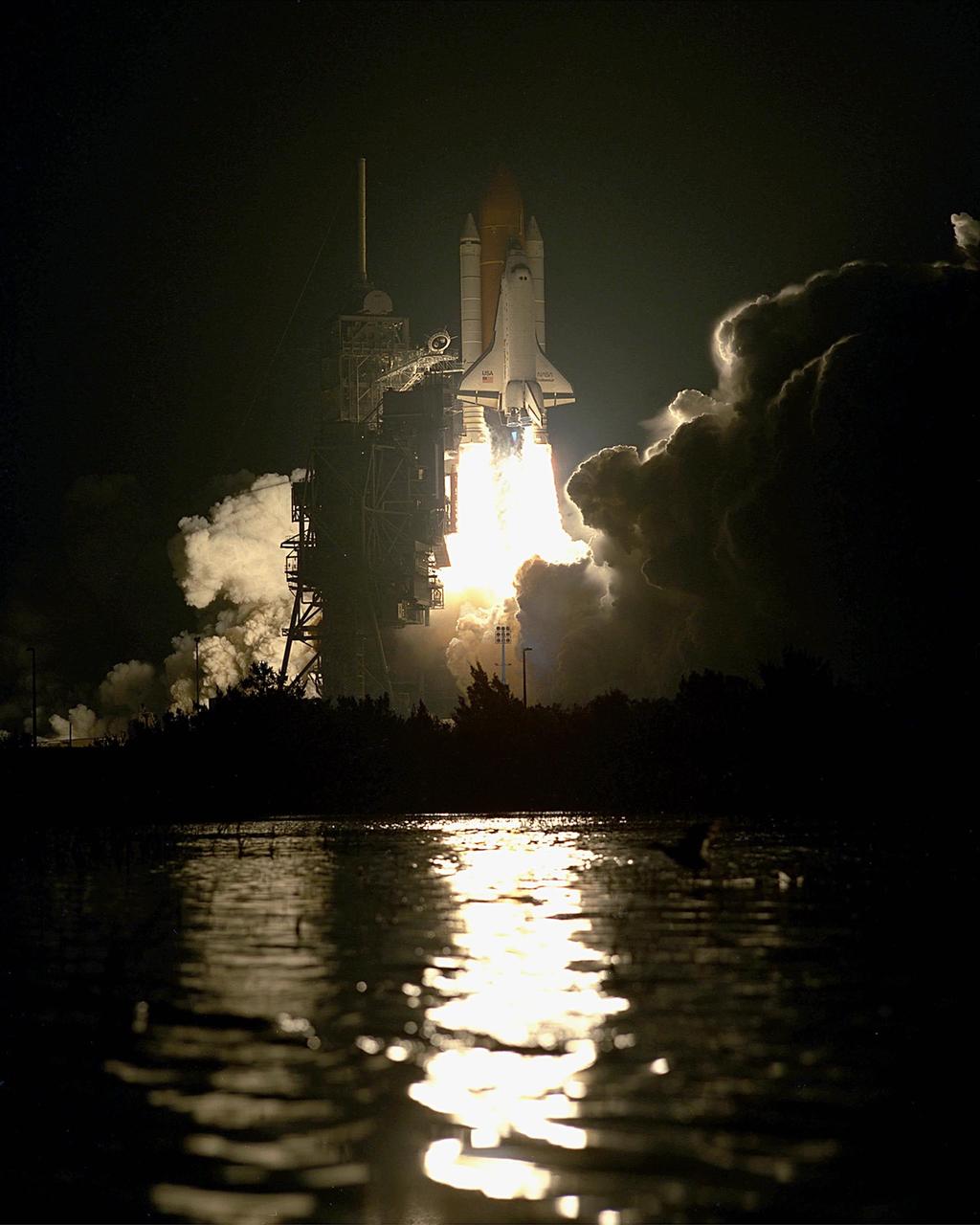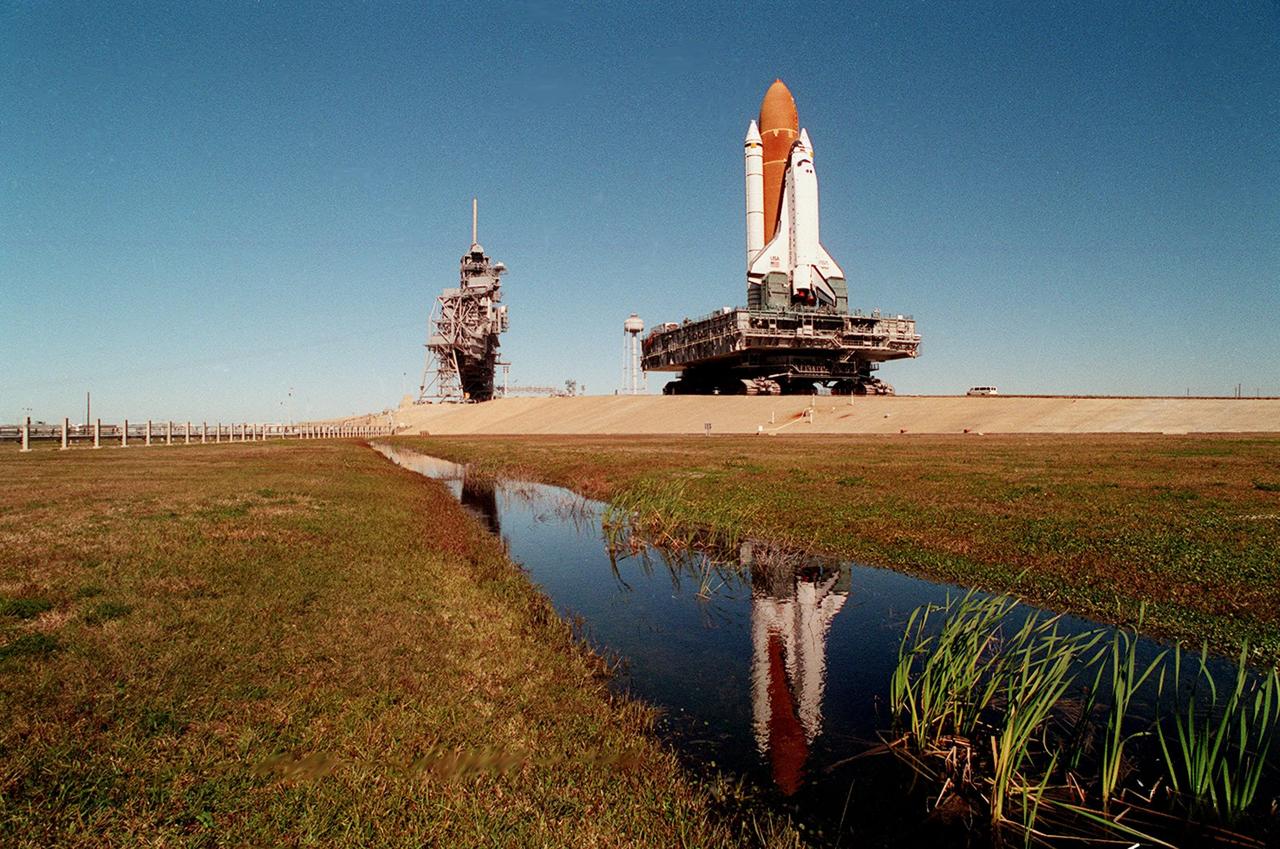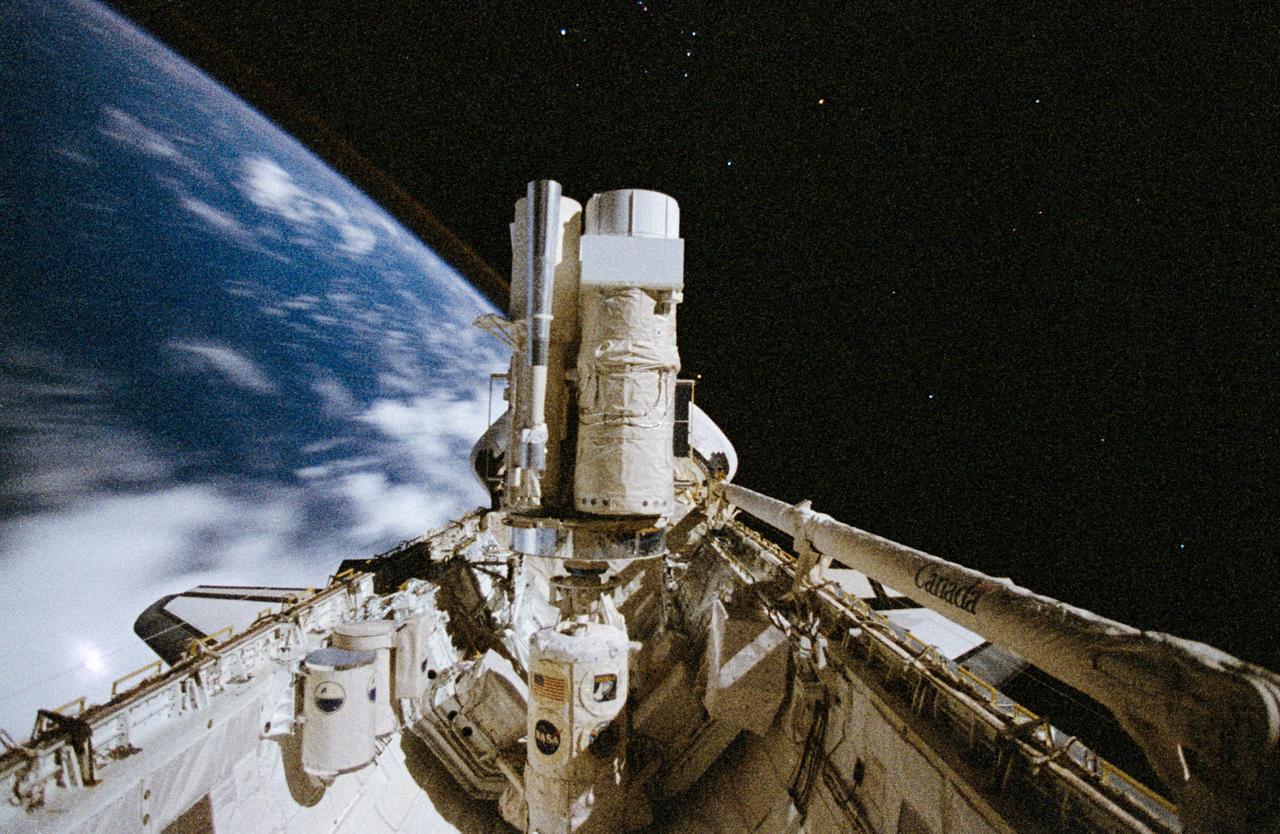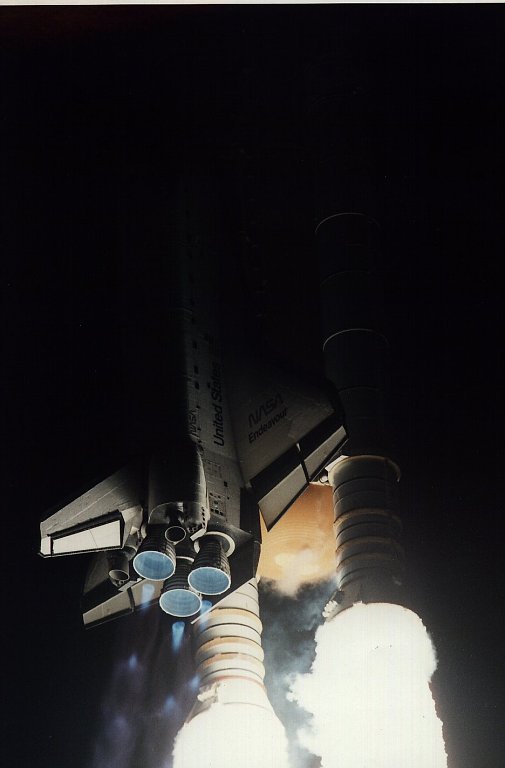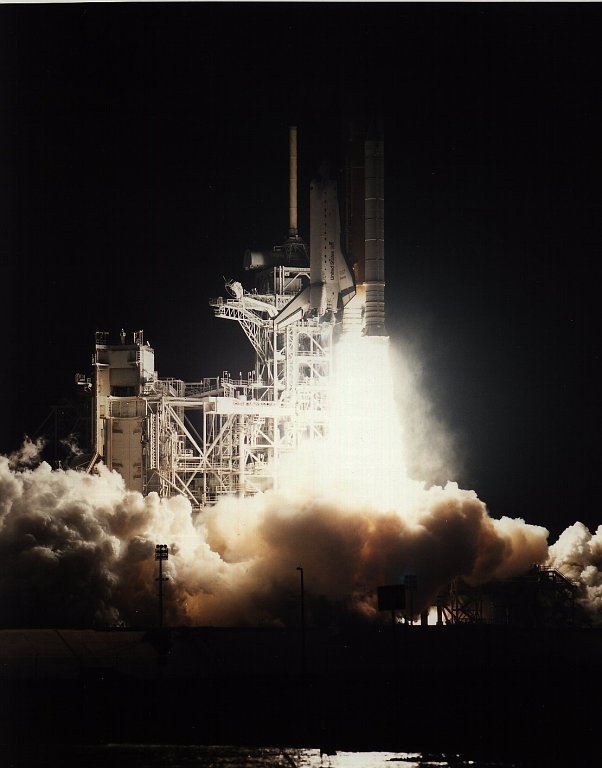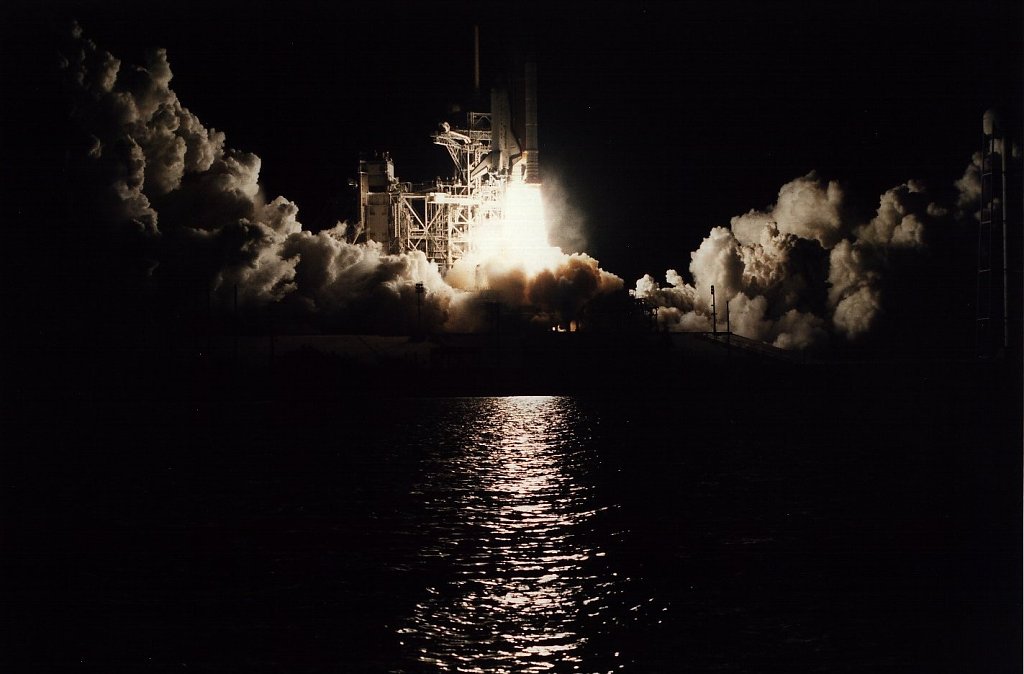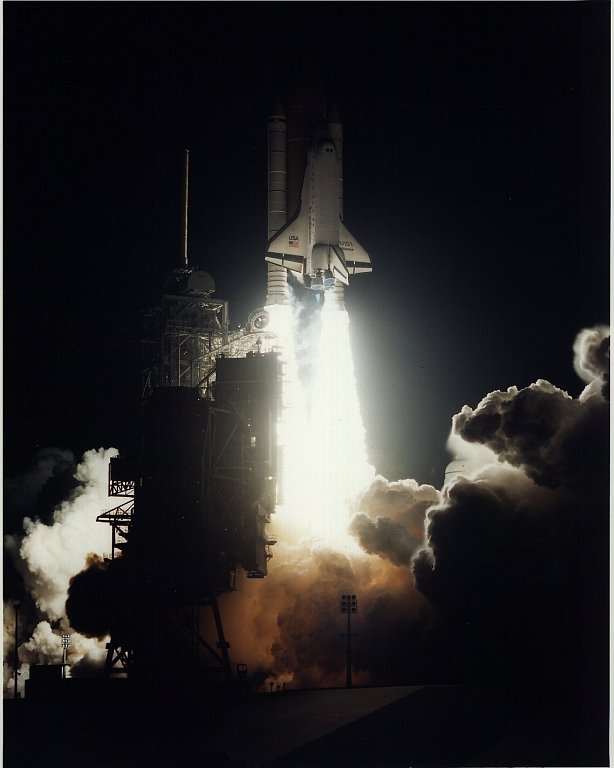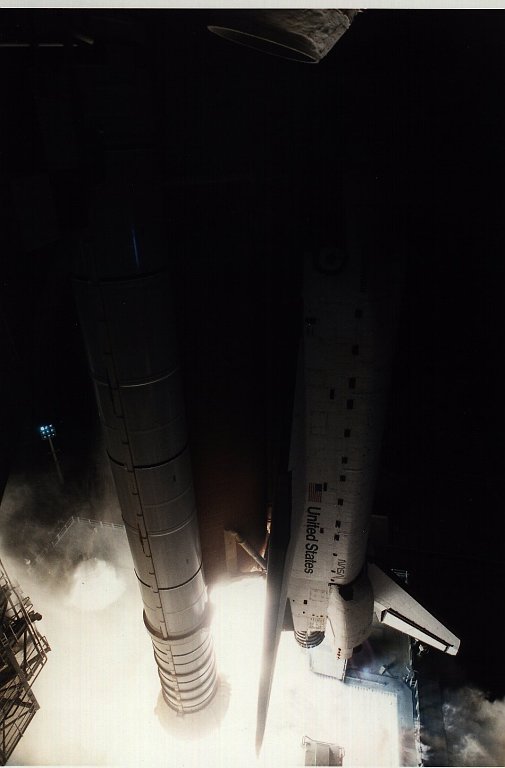STS-67 Fact Sheet
By Cliff Lethbridge

STS-67 — Endeavour
68th Space Shuttle Mission
8th Flight of Endeavour
Crew:
Stephen S. Oswald, Commander
William G. Gregory, Pilot
Tamara E. Jernigan, Payload Commander
Wendy B. Lawrence, Mission Specialist and Flight Engineer
John M. Grunsfeld, Mission Specialist
Samuel T. Durrance, Payload Specialist
Ronald A. Parise, Payload Specialist
Orbiter Preparations:
Tow to Orbiter Processing Facility – October 20, 1994
Rollover to Vehicle Assembly Building – February 2, 1995
Rollout to Launch Pad 39A – February 8, 1995
Launch:
March 2, 1995 – 1:38:13 a.m. EST. Launch was delayed about one minute due to the switch to a backup heater on the flash evaporator system.
Landing:
March 18, 1995 – 1:47:01 p.m. PST at Runway 22, Edwards Air Force Base, California. Rollout distance was 9,975 feet. Rollout time was 59 seconds. Mission duration was 16 days, 15 hours, 8 minutes, 48 seconds. Landing occurred during the 262nd orbit.
Endeavour was diverted to Edwards Air Force Base due to unacceptable weather at the Kennedy Space Center primary landing site on March 17 and 18.
Mission Summary:
The flight of the Astro Observatory (ASTRO-2) built upon the first use of the ultraviolet telescope (ASTRO-1) during STS-35, as well as performing new scientific objectives.
The system, located on the Spacelab pallet in the cargo bay, utilized the Hopkins Ultraviolet Telescope (HUT), Wisconsin Ultraviolet Photo-Polarimeter Experiment (WUPPE) and Ultraviolet Imaging Telescope (UIT).
All 23 of ASTRO-2 objectives were completed.
HUT performed over 200 observations, including ultraviolet measurements of Jupiter’s aurora, Jupiter’s moon Io and the atmospheres of Mars and Venus.
UIT cameras imaged about two dozen spiral galaxies as well as making the first ultraviolet images of the entire moon. It also studied rare “hot” stars, elliptical galaxies and faint, distant galaxies.
Although one of two UIT cameras malfunctioned during flight, 80% of its scientific objectives were met.
WUPPE provided a reported “treasure chest of data” on star systems, including dust clouds in the Milky Way and Large Magellenic Cloud galaxies. It also studied several types of stars, including Wolf-Rayet and Be and observed three recently exploded novae.
STS-67 was the first Space Shuttle mission officially logged onto the Internet. More than 200,000 computers from 59 countries logged onto the ASTRO-2 home page on the Internet, providing 2.4 million requests, some of which were answered by the crew on orbit.
Other payloads included two GAS canisters, Commercial Materials Dispersion Apparatus Instrumentation Technology Associates Experiments-03 (CMIX-03), Protein Crystal Growth (PCG) experiments and Middeck Active Control Experiment (MACE). A leaking Reaction Control System (RCS) thruster briefly delayed ASTRO-2 activities.
SELECTED NASA PHOTOS FROM STS-67
